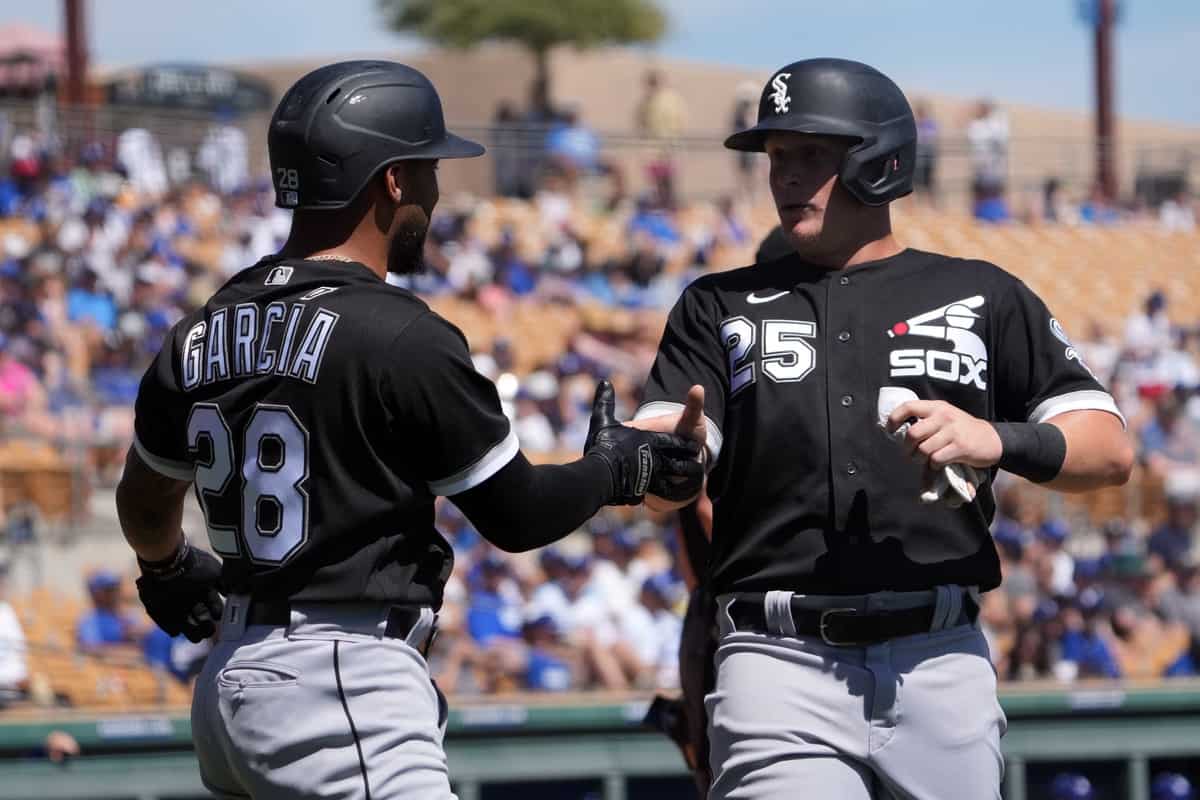UPDATE: The White Sox are calling Andrew Vaughn's injury a hip pointer and said he's projected to return to game action in one to two weeks. This post was published right before the White Sox provided the welcome news, but I'll just slap this item up top rather than incorporate it into a rewrite because all of the excellent points I made still stand.
Given that Andrew Vaughn injured his hip on a diving catch attempt nearly a year to the date that Eloy Jiménez ruptured a pectoral tendon scaling a wall, there's a natural urge to connect the two in an instructive manner.
That doesn't quite connect with me. Sure, they're corner outfielders with below-average abilities on the same roster, but Vaughn hurt himself on a traditional high-exertion baseball play, whereas Jiménez practically invented a genre of on-field misfortune.
Vaughn's injury is closer in spirit to the one Toby Hall suffered during spring training of 2007. The White Sox signed Hall to a two-year deal to back up A.J. Pierzynski, but because Pierzynski seldom yielded his time behind the plate, Ozzie Guillen wanted to see what Hall looked like elsewhere. First base didn't seem like that foreign of an assignment for a catcher despite Hall's limited history (14 games), but Hall tried diving for a ball in the ninth inning of a spring game, and he ended up tearing his labrum.
“Well, that little dive may have just cost me the season,” Hall said. “I’m just really frustrated right now.”
Williams defended his manager’s decision to play Hall at first. “Actually, his chances of getting hurt at first are far less than they are behind the plate,” Williams said. “As ironic as it is, and as bitter a pill as it is to swallow, I don’t think it adds anything to it just because he was over there.”
Williams is correct in that a catcher faces far more potential injury events in a given game, but there's a heightened risk of playing a guy with limited athleticism anywhere he's not accustomed, because such a player might need a longer time to learn body control.
This same debate between "bad luck" and "bad idea" can be held here, some 15 years later. Vaughn has far more experience in the outfield than Hall did at first base, so getting hurt in his second year seems more like something that can happen at any time. Yet Vaughn is still learning right field, and the jump, route and dive betray Vaughn's limitations at the position.
Perhaps I'm wary of stacking Vaughn's injury against Jimenez's because direct comparisons have already resulted in cold comfort. When the bar is set that low, there's no accomplishment in merely clearing it, and so it's difficult to gauge whether the improvement meant anything.
Vaughn looked better than Jiménez because he approached the position in a way that tried to limit physical risk. Statcast said he got the second-worst jumps of any qualifying outfielder in 2021, finishing with a bottom-10 reaction time (feet covered in the first 1.5 seconds) and the worst "burst" (feet covered in the second 1.5 seconds). It was a very cautious brand of defense, which is both more understandable and easier to watch in comparison to Jiménez's avant-garde theater.
The lack of glaring mistakes also kept Vaughn from being underwater on every metric with regards to his 95 games in left field, although "below average" remained the majority ruling.
- UZR: 2.1
- OAA: -3
- DRS: -2
It reminds me of the experience of watching the White Sox go from Dayan Viciedo to Melky Cabrera. Viciedo's navigation system locked up every time his spikes touched warning track, so Cabrera's competence by the wall was a sight for sore eyes. On the other hand, Cabrera possessed the same limited athleticism that kept his defense in the red, and it hamstrung his overall contributions to the White Sox, rendering him an average overall player when the White Sox needed considerably more.
Now take those concerns and apply them to right field. Vaughn only played there 110 innings last year, and while that's a very small sample, every system hated the early returns (extrapolated to match his workload in left):
- UZR: -9.8
- OAA: -12
- DRS: -18
And in that limited body of work, you can find an example of a dive that didn't meet his hopes.
That play took place on Aug. 15. Vaughn homered earlier that game to raise his line to .263/.333/.459. That .792 OPS represents the peak of the season, after which he hit .133/.220/.167 the rest of the way. That's also the period of time where he battled back problems ....
... and then you watch the way he hit the ground in both videos above, and everything starts to look less coincidental.
We don't yet know the extent of Vaughn's injury; the White Sox are supposed to provide an update later in the day. Regardless of the severity they report, it's still worth heeding the danger of this episode, because this could very well be the second time he's hurt himself playing out of position.
But even if it's the first, it's always uncomfortable when an instance of bad luck looks exactly like a feared result of poor planning. Vaughn is playing right field because the White Sox for whatever reason are comfortable cutting corners in the corners, and Vaughn presents the most promising in-house combination of strengths that can offset weaknesses. He certainly appeared hellbent on proving that at the plate, going 7-for-15 with a homer, two walks and two strikeouts to start the spring.
Remove him from the context of the White Sox, and everybody can agree that Vaughn wouldn't and shouldn't be playing an outfield corner on a standard depth chart. He lacks foot speed and hasn't shown an ability to make up for it with secondary skills. His lone strength was limiting his liability and not making matters worse. That's not much to fall back on, because all it takes is one fall forward to create an emergency.





